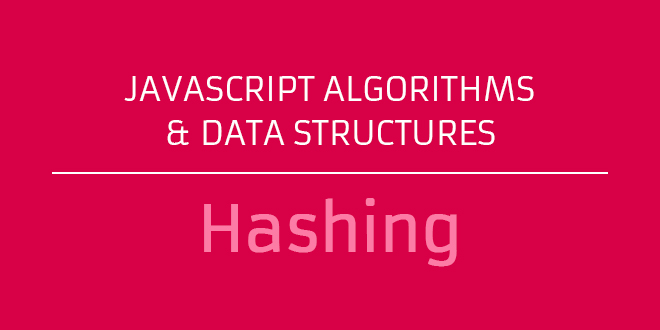Searching is fundamental to any programming language. It would be a waste to have data structures, and no way of searching through them. Searching is fundamental in life (we even search for the meaning of our very own existence), so it only makes sense that after we create collections of data, that we want to search through them. By searching we are able to find answers to problems we are trying to solve. Take a phone book for example, or a telephone directory. Most of these come with tools that help make search relatively simple. For example, there are guides within the book that show you which letter you are currently on (making it easy to jump quickly to a section). Read More
Archive for 2017
Javascript Graphs
Graphs are mind blowing! The first time i studied graphs and its applications, i was simply in awe. The first thing one might think when they hear graphs is to think of some kind of chart or diagram. But that is not the case. They are actually derived from the study of networks and are an extremely hot topic these days. We have all used graph applications without even realizing it. Social media and social networks (Facebook, Twitter, Instagram, etc), the internet, etc. are applications of Graphs, and are used to model many real world systems, like airlines, road traffic, communication, etc. Graphs also fall under the non-linear data structures, but take things to a whole new level. You can even think of linked lists and the binary tree data structure as a form of graph (so we have been using graph applications without even realizing it). Linked lists have node connections from one node directly to another node, and binary trees have one node which could potentially connect to 1 or a maximum of 2 nodes. With graphs any node could potentially link to another node within the collection. So it is not limited as linked lists or Binary Trees. Lets look at our first graph. Read More
Javascript Trees
A tree data structure is very similar to a linked list. Where linked lists are linear (meaning we have each node in the collection pointing to a next node in a fixed sequence), a tree data structure is non-linear. This means we can have each node potentially pointing to one or more nodes. Think of a trees as a way to order things hierarchically. Example are, graphical representations of data (like an organizational charts), files in a file system or even sorted collections of data. When working with trees, order of the elements is not important (if it is, you can store your collection in a linked list, stack, queue, etc). Lets take a look at an example of an organizational chart ( a type of tree structure showing hierarchical data ). Read More
Hashing
In the last post we talked about Maps. We learned that Maps can be referred to as dictionaries, associative arrays, etc. Sometimes you will also hear Maps or Sets being referred to as a Hash ( You will hear the likes of HashMaps or HashSets ). These types of key/value pair collections, are “Hash-bashed Data Structures”. What is hashing? In my very first post on data structures, i mentioned that Linked Lists are faster at adding data quicker to a collection, than it is at retrieving. Hashing is a way of storing data that makes retrieval and access extremely fast (Runtime complexity of O(1) for both retrieval, access, and deletion operations). Our collection is stored in a data structure known as a hash-table. This table is what makes data retrieval and storage so fast. When we looked at Maps in the last post (or even linked lists), anytime we wanted to find data, we had to traverse the whole collection in order to find it. Given a key, we would enumerate the whole thing for its value.Therefore it would take a long time we had a huge collection. Hash tables can be used to solve this problem. Read More
WordPress VPS Permalinks 404 error
I recently moved my blog off Godaddy because i was having a whole bunch of issues when writing posts. I believe Godaddy sets a block on how many times you can publish. Perhaps their servers takes a hit from all the publishers writing content. If they are like me they save every 2 minutes! What happens is that after a few saves on your post, you begin to get server internal errors(504 Gateway Timeout Error). Go daddy claims it was my ISP but reading complaints on other forums i found out that many bloggers had this issue. So it wasn’t an ISP issue. I took action right away. Read More
Maps (Dictionaries) & Sets
As we journey down the lane of data structures, you may or may not have noticed a pattern for how we access data. Since the underlying data storage we have used have been arrays, we have had to rely heavily on using numeric type indexing to retrieve values. Even though in stacks and queues we were only interested items at the top or front, indirectly we were still using some sort of indexing to get those item values. Also when we did traversals in our data structure, it was based on indexing. While this has served us well, sometimes you want to put more meaning into how you retrieve values. Asking for items[0], doesn’t really give a clear definition of what is being asked for. Read More
Javascript Queues
In the previous chapter, we learned about the Stack data structure. We will be talking about javascript queues in this post. The difference between a stack and a queue is the way items are added and removed. While items in a stack are LIFO collections, items in a queue are FIFO (First In First Out). A queue returns items in the same order it way added. The first to get in, is the first out! Lets see how this relates to the real world. Think of a grocery store or the bank cashier for example. The people who join the line, checkout out in the order they got in. If you are in line first, you get served first. If you are last in line, you are served last. Anyone who enters the bank goes to the back of the line (in queue). The same applies when you tell a printer to print a document. The items to print are queued, and are printed on a first come first serve bases. In software development, queues are used in multi threading and concurrency situations, where tasks that are waiting to be processed, are executed in an order of FIFO. Read More
Javascript Stacks
In previous posts we learned what data structures are and their importance when engineering software applications. In this post, we will learn a new data structure called a Stack, and find out what benefits it gives us when storing and organizing data. What is a stack? Well, the meaning is in the idea of the word. Think of a stack of books or papers in a bookstore, or a stack of dirty plates in kitchen. The idea is we have a container (our stack) in which things (data) are stacked on top of another. We are trying to organize data in a stacking order, hence the name. When we add an item, it is added to the top of the stack. And when we remove, we also remove from the top. So think of javascript stacks as a collection in which data is added or removed in a Last In First Out (LIFO) out manner. Lets take a look at a simple diagram. Read More
How AEM Works!
Adobe Experience Manager (AEM) is massive. There’s a lot of confusion when most developers, content editors, managers, etc. come to this proprietary content management system. There are new terminology, processes and tools that one must understand. It can be overwhelming. Though it is impossible to write everything about AEM architecture in a single post, I wanted to write a post detailing some fundamentals for developers, but could still be read by anyone already working in AEM (using a language everyone can understand). So this is not a deep dive type of post. Understanding how AEM works will help you as a developer or author have a better insight into issues you may be having. My aim in the post is to give you the BIG picture. This is AEM architecture fundamentals. Read More
Circular Linked List
In the previous post on singly and doubly linked lists, recall that the collections last nodes next pointers were always NULL. This is because they had nothing to point to. But what if this is not what we wanted? What if when we get to the last node, we wanted to point the next pointer back to the head node, like a photo gallery application (when we get to the last picture, the next picture should be the first). This is where circular linked lists come from (they allow us to rotate through our collection). This means that circular linked lists have no end. One must be careful if they are going to iterate through the collection, or you could end up in an infinite loop. Read More









